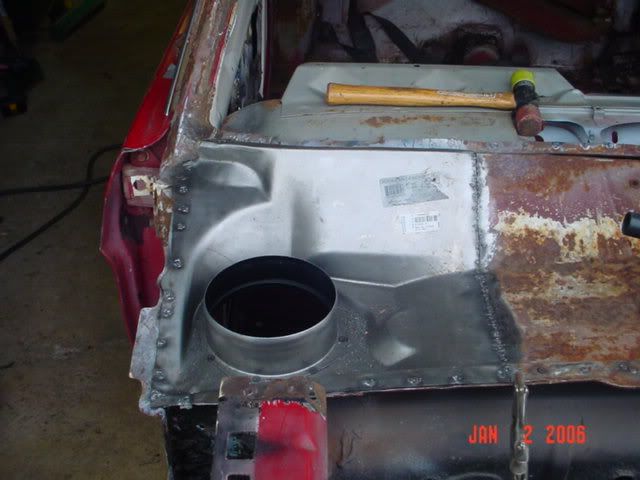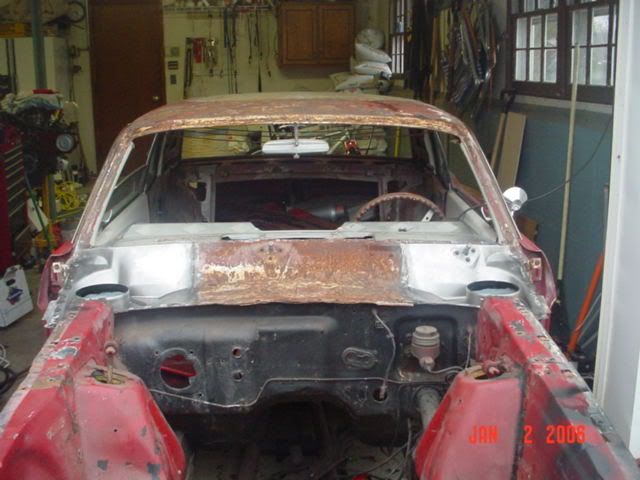 Any idea on what the cost is to replace or repair the cowl vents on a 66 coupe. I've heard of some outrageous amounts. Wondering if anyone has got them done recently before I go get mine done?
Any idea on what the cost is to replace or repair the cowl vents on a 66 coupe. I've heard of some outrageous amounts. Wondering if anyone has got them done recently before I go get mine done?You are using an out of date browser. It may not display this or other websites correctly.
You should upgrade or use an alternative browser.
You should upgrade or use an alternative browser.
cowl vent repair?
- Thread starter guevara42
- Start date
-
Sponsors (?)
chromedog
New Member
let me put it this way... i had 10 hours plus in mine, that was windshield and dash already out, engine and hood removed, no paint work done yet. mind you, this was a boneyard section, so patches will be less (figure about 6-8 hours, because you have to save the upper cowl for reuse) multiply these times by your shops labor rate, add in disassembly, paint time, and hazardous waste disposal. get the picture?

dennis112
15 Year Member
Yep, it is a very labor intensive operation. I had about 3 days in mine removing fenders, hood, windshield, drilling hundreds of spotwelds that retain the cowl, cutting out the damaged are and welding in new. Then I primed and painted the area, welded the cowl back on, installed the windshield, then the hood, and finally the fenders.
geostang351
Member
stangman16
Active Member
geostang351
Member
What drill bit did you use to drill the spot welds out, and how do you know how far to drill?
I used a spot weld drill specifically made to drill out welds. First, I center-punched each weld to provide a starting point and so the drill wouldn't "walk". I then used a .100 drill bit to drill the center of each weld (drilled through). The spot weld drill has a spring loaded center pin that I inserted into the pilot hole. This stablizes the spot drill so when the teeth engage, they don't walk around and break off the little teeth.
Use oil at all welds to prolong the life of the bit.
You'll know when you break through the first layer of metal as it either makes a small pop or the debris from the bit turns to rust from the metal below.
http://www.eastwoodco.com/jump.jsp?itemID=14686&itemType=PRODUCT
stangman16
Active Member
I used a spot weld drill specifically made to drill out welds. First, I center-punched each weld to provide a starting point and so the drill wouldn't "walk". I then used a .100 drill bit to drill the center of each weld (drilled through). The spot weld drill has a spring loaded center pin that I inserted into the pilot hole. This stablizes the spot drill so when the teeth engage, they don't walk around and break off the little teeth.
Use oil at all welds to prolong the life of the bit.
You'll know when you break through the first layer of metal as it either makes a small pop or the debris from the bit turns to rust from the metal below.
http://www.eastwoodco.com/jump.jsp?itemID=14686&itemType=PRODUCT
Thanks! I'm going to attempt doing this, outside in the backyard though - think it'll be alright if I cover the car w/a tarp until I'm done?
Are you going to use POR-15 or prime and paint? Looking great so far, keep it up!
geostang351
Member
Thanks! I'm going to attempt doing this, outside in the backyard though - think it'll be alright if I cover the car w/a tarp until I'm done?
Are you going to use POR-15 or prime and paint? Looking great so far, keep it up!
This is actually my brothers 66 that I did. I did mine on my 68 about 8 years ago. It's really not too hard just very time intensive!
I have already completed this project just have photos at home. I painted the underside of the new panel with rattle can paint.

The finished exposed side was painted with Rust Bullet, which is similar to POR-15. Then bondod the welded seam then again rattle paint over bondo. It isn't visible and the Rust Bullet will keep it water tight.
http://rustbullet.com/
krash kendall
Active Member
danny clemens
Member
- May 4, 2005
- 728
- 0
- 16
If you do your own I have one more recommendation. Before you start drilling any spot welds drill holes all the way through on each corner and two or three places across the top and bottom. After you put the patches on drill them out where the holes in the bottom panel are. When you go to put the cowl cover on you will have something to make it align up perfectly. When you weld these holes up that are all the way through you can hold or clamp a piece of copper underneath to keep the weld from dripping.
Similar threads
- Replies
- 3
- Views
- 824
- Replies
- 29
- Views
- 2K
- Replies
- 23
- Views
- 4K
- Replies
- 1
- Views
- 1K
- Replies
- 28
- Views
- 2K




